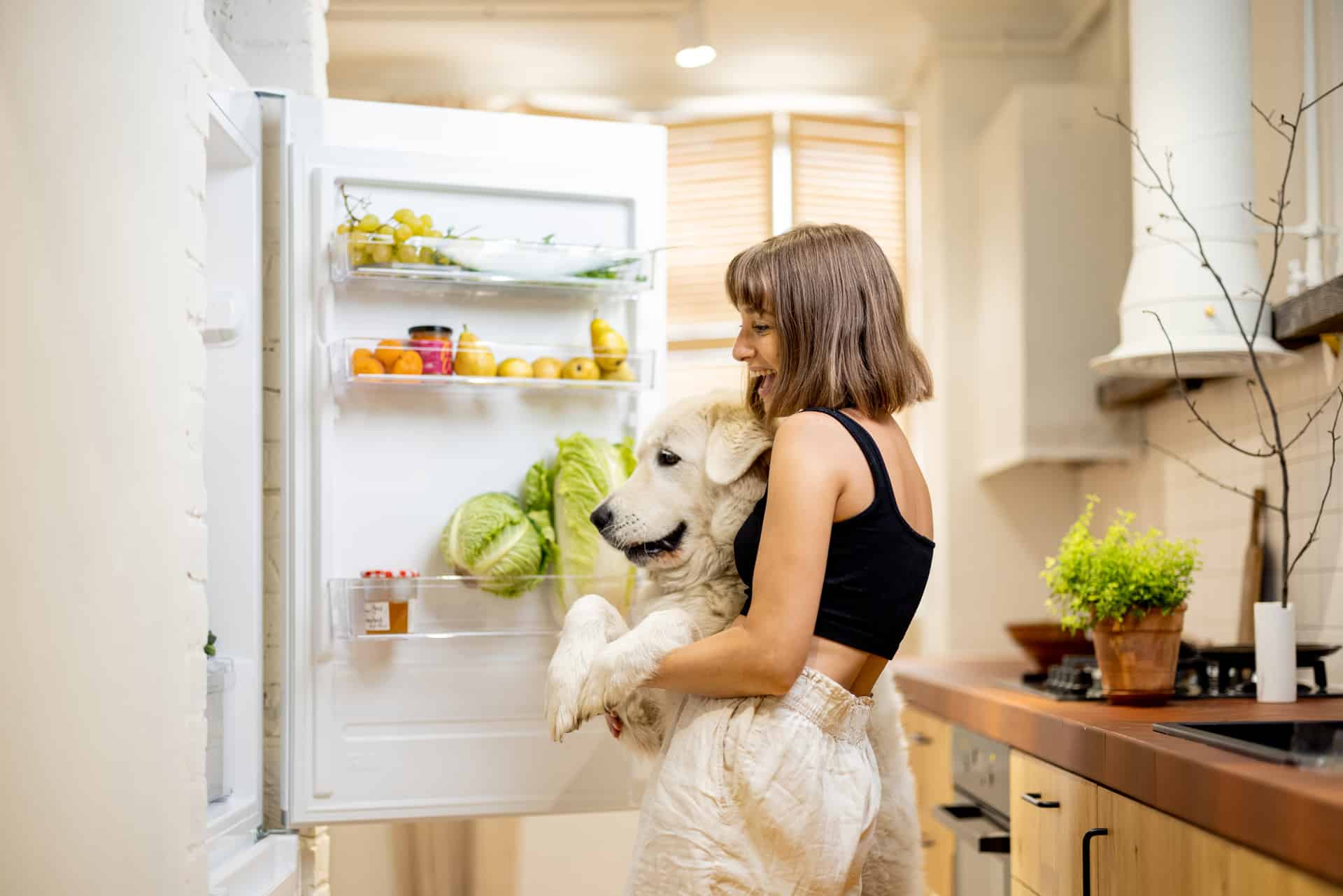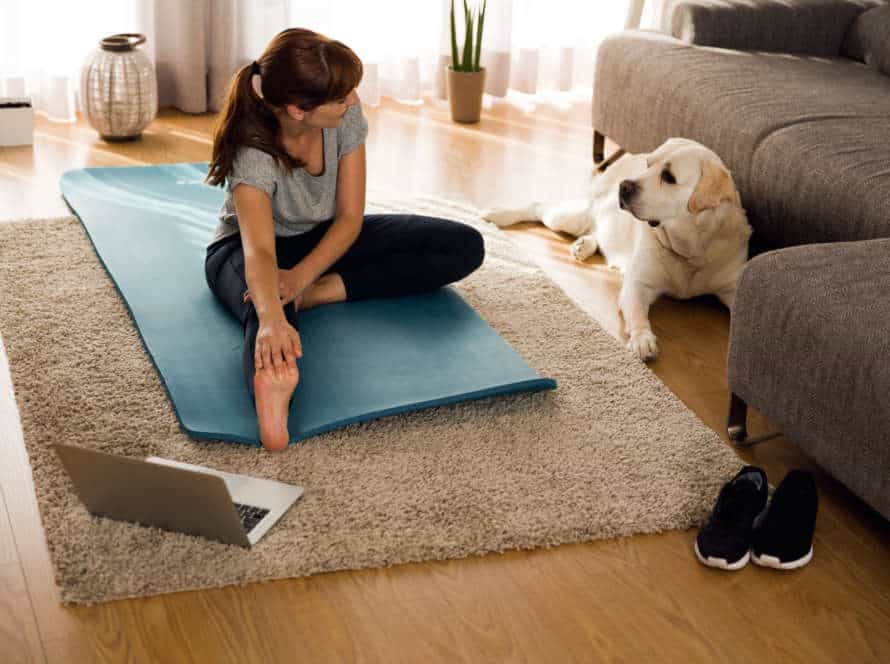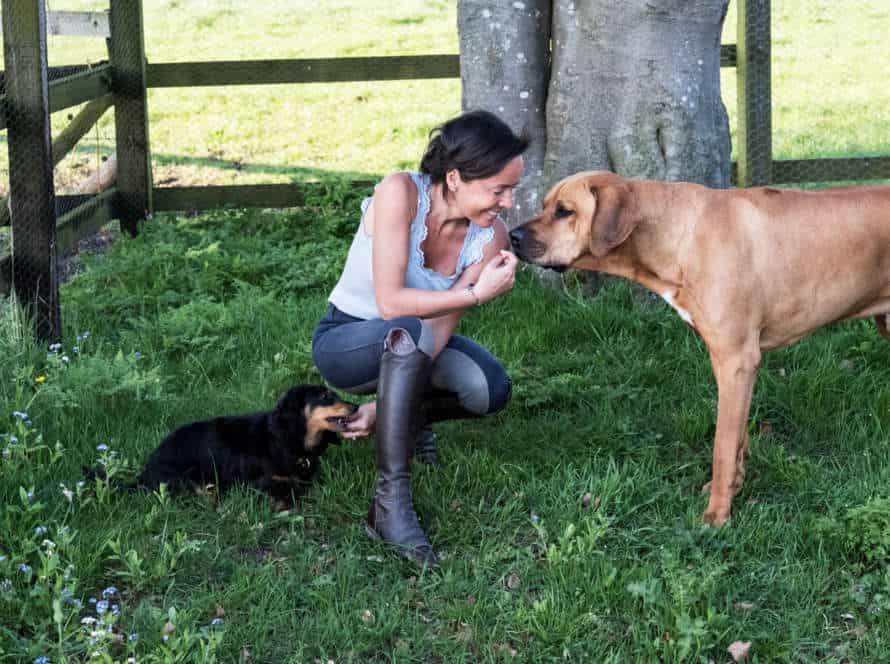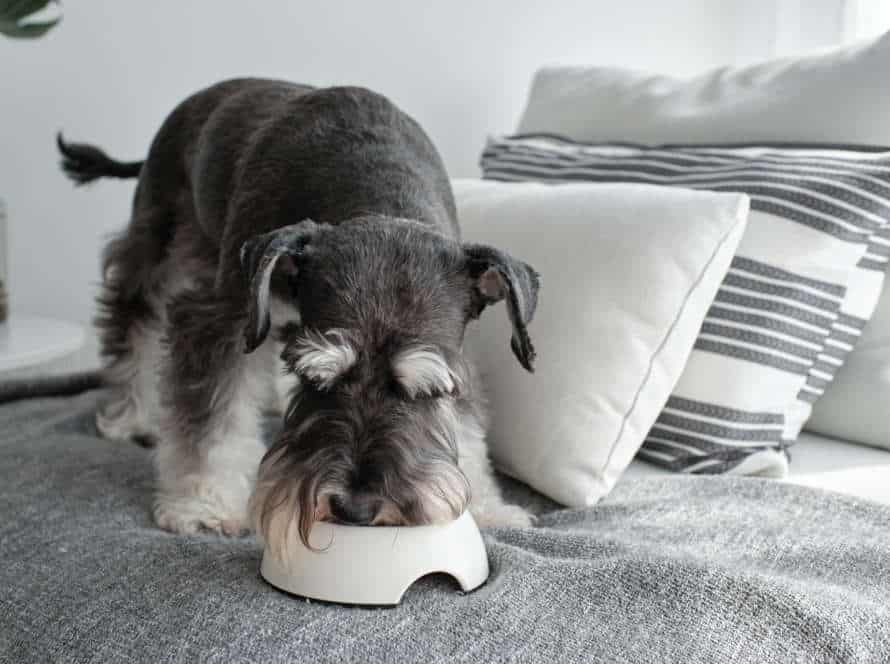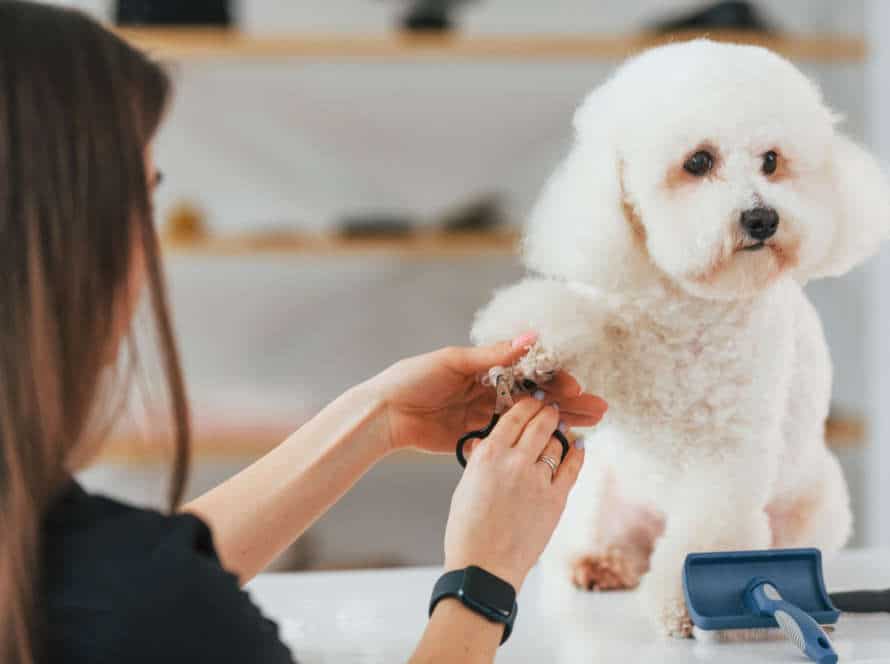A Beginner’s Guide to Crafting Homemade Dog Food
Making homemade dog food is a great way to make sure your pet is eating healthy and tasty food! Here’s your guide:
- Speak to your vet about your pup’s nutritional needs.
- Pick out good ingredients like lean meats, fresh veg, and whole grains.
- Keep away bad stuff like chocolate, onions, and garlic.
- Cook the food using boiling, steaming, or baking.
- Blend the ingredients together in the right amounts depending on your pup’s age, size, and activity level.
- Give the homemade food in small amounts and see how your pup responds.
Creating homemade dog food takes effort and awareness, but it could help your pup lead a healthier, happier life!
Why Homemade Dog Food is a Good Choice
Homemade dog food is on the rise! Owners are realizing the perks of giving their furry friends a natural diet. It means better nutrition, plus no more preservatives or unhealthy fillers found in store-bought food.
This guide will explore why homemade food is perfect for your pup and how to get started creating tasty recipes.
Benefits of Homemade Dog Food over Commercial Dog Food
Making homemade dog food can be better than relying on commercial options. You will know what goes into your pet’s meals and can pick the best ingredients. You can also customize it to their dietary needs. Plus, it can save money and improve their health.
Before starting, speak to your veterinarian and research which ingredients are best for dogs.
What Dogs Should Eat
Dogs should eat a mix of protein, veg & grains for a balanced diet. Making homemade dog food is a great way to make sure it’s fresh, healthy & has no added extras.
To get started:
- Ask your vet or nutritionist what the right ratio of protein, veg & grains is for your dog.
- Choose human-grade, fresh ingredients with no artificial preservatives, additives or fillers.
- Cook everything thoroughly to make it safe and easy to digest.
- Don’t give your dog chocolate, onions or grapes – they’re toxic.
- Gradually add homemade food to your pup’s diet to avoid tummy troubles.
Pro tip: Freeze it in batches for easy meal planning & portion control.
Risks of Not Providing Proper Nutrients
Providing your pup with nutrients is essential for their health and well-being. Not doing so can be risky. Here are some of the dangers:
- Malnutrition – Not enough nutrients can lead to muscle loss, weakness, and a dull coat.
- Digestive Issues – Without the right amount of fiber, vitamins, and minerals, constipation, diarrhea, or other issues may occur.
- Weak Immune System – Without the right nutrition, a dog’s immune system is weaker, making them more prone to sickness.
- Joint Problems – Poor nutrition can weaken bones and joints, and cause arthritis or other mobility troubles.
Making homemade dog food can guarantee they get the nutrients they need. It’s a good option for pet owners who want the best for their pet. But, it’s important to talk to a vet before switching to homemade food. They can create a balanced diet that meets your pup’s individual needs.
Preparing Homemade Dog Food
Making homemade meals for your pup is a great way to make sure they are getting the nutrients they need. Plus, it can be an enjoyable activity for dog lovers, and it helps save money! Before you start cooking, it’s important to know the basics. Here’s what you should know:
Creating a Meal Plan
Making a meal plan for your pet is important to offer them a healthy and balanced diet. Follow these steps:
- Work out your pet’s calorie intake based on age, weight, and activity level.
- Pick a top-notch protein source such as chicken, turkey, beef, or fish.
- Add healthy carbs like sweet potatoes, brown rice, or quinoa for energy and dietary fiber.
- Mix in essential fats like fish oil or flaxseed for skin and coat health.
- Include vitamins and minerals with veggies and fruits like carrots, spinach, and apples.
- Talk to your vet to make sure their diet meets their needs, and no underlying health issues require a special diet.
Pro-Tip: Introduce new foods slowly to avoid tummy issues, and always clean your hands and the food bowls for proper hygiene.
Choosing Quality Ingredients
Choosing the right ingredients is a must when making homemade dog food. Here’s what you need to know:
- Protein: Go for lean sources like chicken, turkey, beef and fish. Skip processed meats and by-products.
- Vegetables: Choose safe ones like carrots, sweet potatoes, green beans and peas. Avoid onions, garlic, etc.
- Grains: If you opt for grains, go for whole grains like brown rice, oatmeal and quinoa. Avoid wheat, corn etc.
- Fats: Include healthy fats like fish oil, flaxseed oil, and olive oil in moderation.
- Supplements: Check with your vet if your dog needs additional supplements like calcium or vitamins.
By picking quality ingredients, you can provide your pup with a balanced diet, meeting all their nutritional needs, free of additives or fillers.
Understanding Nutrient Requirements
It’s essential to know your dog’s nutrient needs when making homemade dog food. Here are the must-haves:
- Protein: Meat, fish, eggs, and dairy help build strong muscles.
- Carbohydrates: Grains, veggies, and fruits provide energy and fiber.
- Fats: Fish, meat, eggs, and plant-based oils give your pup energy and support vitamin absorption.
- Vitamins/Minerals: Fruits, vegetables, and supplements serve bodily functions.
Consult with a vet to make sure you’re meeting your pup’s individual needs based on age, breed, and activity level.
Homemade Dog Food Recipes
Homemade dog food is now super trendy! Pet owners hunting for healthy alternatives for their pup’s diet may want to try making their own meals. Fresher ingredients, added nutrition, and customised meals are all benefits of homemade meals. There are lots of great recipes for beginners – let’s check them out!
Basic Chicken and Brown Rice Recipe
Homemade dog food is a great way to give your furry pal a nutritious meal that has no additives or preservatives. Here’s a basic recipe for chicken & brown rice – it’s tasty & easy to make!
Ingredients:
- 2 boneless, skinless chicken breasts
- 1 cup of brown rice
- 2 cups of water
Instructions:
- Rinse the rice & put it in a pot with the water. Boil it, then reduce the heat & let it simmer for 30-45 minutes.
- While the rice is cooking, prepare the chicken by boiling or baking it until done.
- Then, dice the chicken into small pieces.
- Mix the diced chicken with the cooked brown rice.
- Let the mixture cool before serving to your pup.
Pro tip: Add carrots & green beans to the recipe for added nutrition & flavor. Ask your vet to make sure your dog is getting the right nutrients according to their individual needs.
Turkey and Sweet Potato Recipe
This turkey and sweet potato meal is perfect for pet owners who want to make their four-legged pals healthy food. Not only is it yummy and easy-to-prepare, but it also provides essential nutrients and vitamins. Here’s how to make it:
Ingredients:
- 1 lb. ground turkey
- 1 large sweet potato, diced
- 1 tablespoon olive oil
- 1 cup baby spinach
Directions:
- Heat oil over medium heat in a large pan.
- Stir in the ground turkey ’til brown.
- Add the diced sweet potato and keep stirring until soft.
- Lastly, add the baby spinach and cook until wilted.
- Let the mixture cool down and serve to your pet.
This simple recipe is a great way to experiment with homemade pet food and make sure your furry friend is getting the best nutrition!
Beef and Carrot Recipe
This beef ‘n’ carrot recipe is a simple and nutritious meal for your beloved pet, made with all-natural ingredients. Here’s what to do:
Ingredients:
- 1 lb ground beef
- 1 cup chopped carrots
- 1 cup brown rice
- 1 teaspoon dried rosemary
- Water
Steps:
- Fry beef in large skillet over medium heat until cooked.
- Add carrots and sauté for 5-7 mins till soft.
- Cook brown rice according to package instructions in separate pot.
- Put cooked rice in skillet with beef and carrots.
- Add rosemary to skillet and mix.
- Pour water over ingredients and let simmer on low heat for 20-25 mins.
- Remove from heat and let cool before serving.
Pro Tip: Check with vet before changing diet and make sure recipe fits pet’s needs.
Preparation and Storage of Homemade Dog Food
Ready to give your pup the nutrition it needs and cut down costs? Prepare homemade dog food! But, it’s essential to pay attention to how you prepare and store food. Here’s the scoop on how to do it right.
Ensure proper preparation and storage of ingredients for safe and nutritious homemade food for your furry family member.
Tips for Safe Food Handling
Making homemade dog food? Safety first! Here are some tips to keep food safe:
- Before and after handling raw ingredients or cooked food, wash your hands and all food-related surfaces, utensils, and containers.
- To stop cross-contamination, use separate boards and utensils for raw meat and other ingredients.
- Fully cook meat and eggs. Avoid giving your pooch any raw or uncooked food.
- Store homemade dog food in airtight containers. Put leftovers in the fridge for 3-5 days or in the freezer for 3 months.
These tips will make sure your pup’s food is healthy and safe.
Freezing and Thawing Homemade Dog Food
Crafting homemade dog food is a yummy way to give your pup high-quality meals. Here’s a beginner’s guide to preparing and storing it!
- Cook the dog food then let it cool.
- Spoon it into containers or bags, as per your pup’s serving size.
- Label each container/bag with the food type, date of prep and portion size.
- Place the labeled containers/bags in the freezer.
- When ready to serve, move the container/bag to the fridge and thaw it before feeding your pup.
Pro tip: Use an ice cube tray for mini portions if you have a small dog or need a quick meal.
Homemade Dog Food Storage Guidelines
For your pup’s health and safety, it is essential to store homemade dog food properly. Here are some tips to help you:
- Use airtight containers – keep out moisture, air, and bugs.
- Label the containers – include date of prep, type of food, and feeding instructions.
- Get the right portion size – only take out enough for one or two meals, as air can spoil it if the entire container is exposed.
- Don’t store for too long – in the fridge it can last up to 5 days, and in the freezer for 6 months. Storing it for longer can cause bacteria growth.
By following these guidelines, your pup’s homemade food will stay fresh, nutritious, and safe to eat!
Pro tip: Always talk to your vet before changing your dog’s diet.
Common Mistakes to Avoid When Making Homemade Dog Food
Making homemade dog food can be great, yet it’s vital to know the mistakes people make. Not knowing the balance of proteins, fats, and carbs plus not including essential vitamins and nutrients can be bad for your pup’s health. In this guide, let’s discuss the things to avoid when making your own dog food recipes.
Feeding Excessive Amounts of One Food Group
Making homemade dog food? Avoid giving too much of any one food group! A good homemade dog food should have the right mix of protein, carbs, fats, vitamins, minerals and more. Too many carbs or proteins can be bad for your pup. Here are a few tips:
- Consult a vet or nutritionist to determine your pup’s needs.
- Include various proteins like chicken, beef, fish and eggs.
- Add greens and fruits for vitamins and minerals.
- Use a recipe reviewed by a vet nutritionist.
- Pro Tip: Introduce new foods gradually, and watch your dog’s response.
Not Providing Proper Nutrient Balance
One of the most frequent mistakes when making homemade dog food is not giving a proper amount of nutrients. Dogs need a combination of protein, fat, carbs, vitamins and minerals to stay healthy. Here are some tips to guarantee your homemade dog food is well-balanced:
- Consult with your vet or veterinary nutritionist to know your pup’s nutrient needs.
- Include lean meats, fish or eggs for high-quality protein sources.
- Add omega-3 and omega-6 fatty acids for healthy fats.
- Mix in complex carbs like sweet potatoes, brown rice or quinoa for energy and fiber.
- Incorporate fresh fruit and veggies for essential vitamins and minerals.
- Do not use ingredients poisonous to dogs like onions, garlic, grapes and chocolate.
- Follow a recipe tailored for homemade dog food to ensure your pet’s diet is balanced.
Pro tip: Making homemade dog food takes effort, but it can be a fulfilling experience for both you and your pup.
Not Properly Preparing and Storing Homemade Dog Food
Making homemade dog food can be a great way to give your furry pal a nutritious, balanced diet. Yet, there are some typical errors to dodge when creating and storing it.
- One mistake is not following a recipe. This is vital to make sure your dog gets the proper nutrition. Without it, homemade food can cause health problems.
- Another blunder is feeding the wrong ingredients. Avoid toxic substances such as chocolate or onions. Choose whole foods, lean proteins and healthy fats instead.
- Also, don’t overlook any appropriate supplements. Ask your vet for guidance if you’re uncertain about your pup’s nutrition needs. Vitamins and minerals can guarantee they get what they need.
- Lastly, store it incorrectly. Put it in an airtight container and keep it in the fridge or freezer. Discard leftovers after a couple of days.
Taking these simple steps can help dodge mistakes and make safe, nutritious homemade dog food to keep your fuzzball happy and content.
Transitioning Your Dog to Homemade Dog Food
Transitioning your pup to homemade dog food can be beneficial. You’ll know exactly what they’re eating! Plus, if your pup has dietary issues, you can craft a meal that caters to their health needs. You’ll be in control of the ingredients – no worrying about additives and preservatives found in store-bought dog food. Let’s get started on transitioning your doggo to home cooked meals!
Switching from Commercial to Homemade Dog Food
Switching to homemade dog food? Get ready! Here’s a guide:
- Work out your pup’s nutritional needs. Age, weight, activity – all important.
- Choose top-notch ingredients. Protein, veg, grains (optional).
- Gradually mix homemade food with commercial. Over a week or two.
- Keep an eye on digestion and health. Adjust food if needed.
- Consult a vet or nutritionist. To make sure needs are met.
Pro tip: Wash hands & kitchen tools. So food is safe for pup!
Sudden Diet Changes vs Gradual Changes
Transitioning a dog to homemade food? Gradual changes are better than sudden ones. Sudden changes may upset digestion and cause health issues. Gradual changes allow the body to adjust safely.
Follow these steps:
- Start by mixing small amounts of homemade food into regular food.
- Increase the amount over several days.
- Monitor digestion, appetite, energy and health throughout.
- Adjust recipe based on individual needs.
- Always consult vet before making big changes. They can advise on recipes, portions and nutritional requirements.
Monitoring Your Dog’s Response to Homemade Dog Food
When transitioning your pup to a homemade diet, monitoring their reaction is crucial. Evaluate how they’re adapting, watch for any allergic reactions or health changes and make sure their nutritional needs are met. Here are some tips to help:
- Test for food allergies by giving small amounts of one ingredient at a time.
- Adjust portions and ingredients according to weight, age and activity levels.
- Get a vet’s help to ensure proper daily nutrition, avoiding overfeeding or malnourishment.
- Monitor body condition and stool daily to see if any diet adjustments are needed.
All these measures will assist you to find the right balance and make the switch to homemade food a success!
Frequently Asked Questions
Q: Why should I consider crafting homemade dog food?
A: Crafting your own dog food allows you to have control over what your pet is consuming. It can also be a healthier and cost-effective option for your dog.
Q: What ingredients are safe to use for homemade dog food?
A: Some safe ingredients to use for homemade dog food include lean proteins like chicken, turkey, or beef, fresh vegetables like spinach, carrots, and sweet potatoes, and healthy grains like brown rice or quinoa.
Q: How do I make sure my homemade dog food recipe is nutritionally balanced?
A: It’s important to consult with a veterinarian or canine nutritionist to ensure that your homemade dog food recipe provides all the necessary nutrients your pet needs to stay healthy. They may recommend adding certain supplements or vitamins to your recipe.
Q: Can I craft homemade dog food for dogs with specific dietary needs or allergies?
A: Yes, crafting homemade dog food allows you to cater to your pet’s individual dietary needs or allergies. Always consult with a veterinarian or canine nutritionist to ensure you are crafting a recipe that meets your dog’s nutritional needs.
Q: How should I store leftover homemade dog food?
A: Store leftover homemade dog food in airtight containers in the refrigerator and use within 3-4 days. You can also freeze homemade dog food in individual servings for convenience.
Q: Can homemade dog food replace commercial dog food entirely?
A: While homemade dog food can be a healthy option for your pet, it should not replace commercial dog food entirely. Commercial dog food is formulated to provide all the necessary nutrients your pet needs in the appropriate amounts. Consult with a veterinarian or canine nutritionist to develop a diet that incorporates both commercial and homemade dog food.

